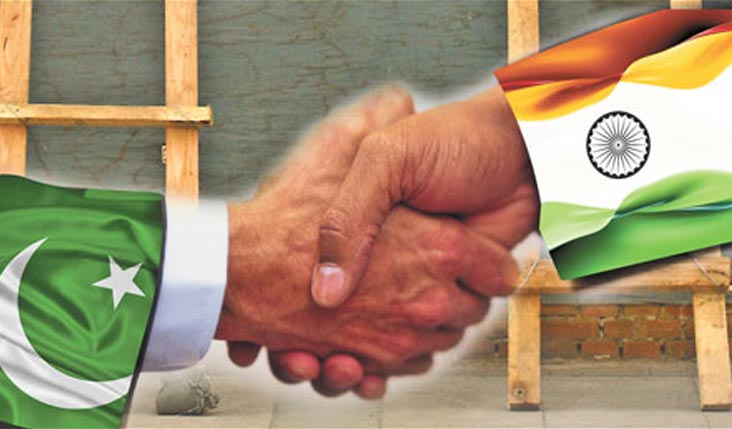Planning Commission recommends MFN status for India
By Mehtab Haider
ISLAMABAD: Planning Commission’s top panel of economists, led by Adviser to the Prime Minister on Finance Dr Hafeez Pasha, has recommended the government to grant the most favoured nation (MFN) status to India.
“As a first step, and perhaps the most important one, India and Pakistan need to normalise trade with each other on an MFN basis,” according to the report of the panel made available to The News. “It is essential to move from a positive list approach to a negative list approach.”
The report titled “Medium-Term Development Imperatives and Strategy for Pakistan” said that it remains important for the two countries to develop common harmonised system of codes and greater transparency.
Opening up of Attari-Wagah borders to allow transportation, as well as new rail and road links such as Khokrapar-Munabao and Srinagar-Muzzafarabad were also suggested in the report.
“The shipping and rail protocol should be amended. There is a need to reduce the non-tariff barriers, which are more pernicious on Pakistani exports to India. Moreover, there is also a need for a simplified and harmonised system of technical barriers to trade and sanitary phyto-sanitary standards (SPS),” it said.
On visa restriction, the panel of economists suggested that it should be eased by eliminating city-specific visas prior to the entry and police reporting on arrival. Uninterrupted telecommunication links between the two countries are also need of the hour. It was also recommended that Pakistan and India need to set up an institutional mechanism that would guarantee each other’s investments.
“The viability of the process will depend upon continuing political commitment to trade expansion and to the need of managing disputes, while keeping other interfaces for engagement intact,” the report said.
The recent estimates on trade potential suggest that it can be in the range of $3.0 to $10 billion as compared with less than $400 million during the last six years, the report said. It shows that the two countries exploit in the range of 4.0 and 13 per cent of the total trade potential, it added.
Since Pakistan and India account for almost 90 per cent of South Asia’s GDP, low bilateral trade remained a key constraint for growth of South Asian exports to the rest of the world, as well as an expansion of intraregional trade.
Dwelling upon the benefits of normalising trade with India, the panel suggested that opening up trade with India would also have a salutary effect on prices and would ease inflationary pressures on Pakistan.
“India has huge demand for energy and Pakistan can serve as a transit route for energy from Iran and Central Asia,” it added.
It is estimated that South Asian Free Trade Agreement (SAFTA) will help double Pakistan’s exports to South Asia, although India by preferring free trade agreements and regional trade agreements with other SAARC countries has more or less signalled the demise of the regional trade under SAFTA, suggesting that if Pakistan is not to be marginalised in South Asian trade because of free and regional trade agreements, it should fully support SAFTA, the report said, adding that the first step in this direction would be to give MFN status to India, the report added.








